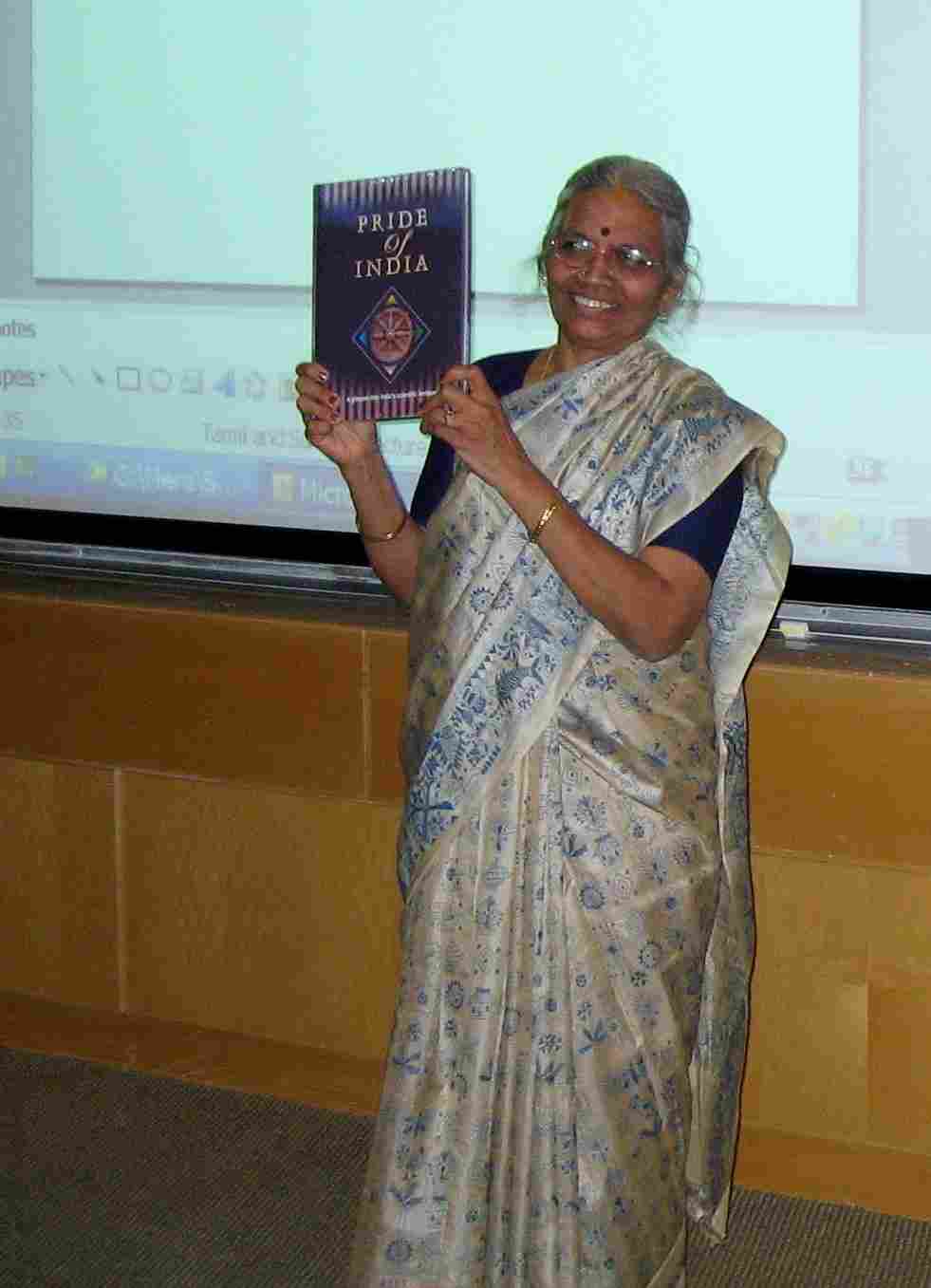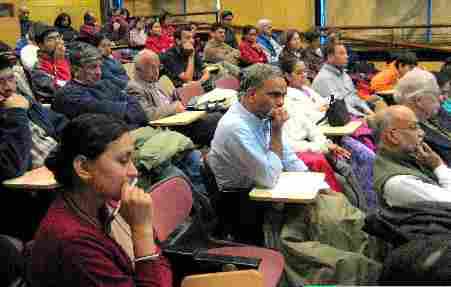Contribute
| Meru Foundation And MIT Samskritam Presents Sanskrit And Tamil Language And Literature |
PR
03/08/2007
Over two Saturdays, enthusiasts of literature and languages
came to two very diverse venues to hear Dr. Rajalakshmi Srinivasan, a scholar
visiting from India, talk about Tamil – Sanskrit grammar and the Kamban-Valmiki
Ramayana. Over 70 people at MIT and with standing room only at the Boxboro
public library, beating the cold weather people came to listen to the
relationship between the grammars of Tamil and Sanskrit, and to the Sanskrit
and regional versions of the epic Ramayana. Dr. Srinivasan spoke about two great masters, Panini and
Tolkappiar, who both wrote the earliest grammars known, in the form of the
Ashtadhyayi in Sanskrit and Tolkappiam in Tamil. These texts have influenced
the two languages up to the modern period. Dr. Srinivasan explored what makes
both these languages phenomenal and their contribution to the development of
human thought. She gave several examples
in the both languages of sentence structure and word-formation through sandhi-samasa,
which highlight the capacity of aesthetic delight that these two languages have
brought over the millennia in the form of literature and poetry. She detailed a
form of Tamil poetry that used geography of land types to express love. The
land forms were divided into five regions, the mountain, forest, ocean, fields
and parched waste lands each evoked distinct aspects of love associated with
specific colors, words and symbols. In the modern period, she remarked, “we see
this change into more direct ways of expressing love and to address the lover.â€
She also highlighted how the two languages have survived periods of growth and
decline without losing their originality. In the second lecture, Prof Srinivasan explored the
different versions of the Ramayana written in Sanskrit by Valmiki, in Tamil by
Kamban and in Avadhi by Tulsidas. The context and content of these texts were
presented with illustrations and paintings that brought out the beauty and
depth of the respective narratives and styles of the epic story of Lord Rama. The
differences between the texts were also emphasized, for example, the importance
of Rama as an avatar in Kamban and Tulasidas as distinct from the emphasis on
Rama as a King in Valmiki. Dr. Srinivasan’s singing of both the Tamil and
Sanskrit excerpts was wonderful as was her ability to highlight the
interpretations given by Kamban and Valmiki. Dr. Rajalakshmi Srinivasan is an accomplished scholar of
Sanskrit and Tamil languages and their literature. She has spent a lifetime
studying and researching texts from both Tamil and Sanskrit. She has translated
a famous historical Tamil novel Ponniyin Selvan as well as short stories of
Subramania Bharatiar and Kalki Krishnamurthy into Sanskrit. Currently, she is
the chairperson of Poorna Pragya Samshodhana Mandiram a Sanskrit Research
Institute in Bangalore, India. She is also editing and publishing an Advaita
commentary on the Brahma-sutra titled Vaiyasika Ratnamala. She was a Sanskrit
Professor at a college affiliated with Madras University. She has received
several awards and honors for her translations of Tamil and Sanskrit literature.
You may also access this article through our web-site http://www.lokvani.com/

